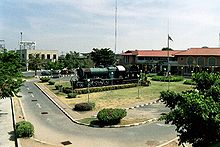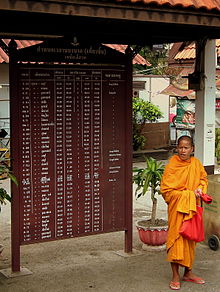Railway Bangkok Hua Lamphong – Nakhon Ratchasima
| Bangkok Hua Lamphong – Nakhon Ratchasima | |||||||||||||||||||||||||||||||||||||||||||||||||||||||||||||||||||||||||||||||||||||||||||||||||||||||||||||||||||||||||||||||||||||||||||||||||||||||||||||||||||||||||||||||||||||||||||||||||||||||||||||||||||||||||||||||||||||||||||||||||||||||||||||||||||||||||||||||||||||||||||||||||||||||||||||||||||||||||||||||||||||
|---|---|---|---|---|---|---|---|---|---|---|---|---|---|---|---|---|---|---|---|---|---|---|---|---|---|---|---|---|---|---|---|---|---|---|---|---|---|---|---|---|---|---|---|---|---|---|---|---|---|---|---|---|---|---|---|---|---|---|---|---|---|---|---|---|---|---|---|---|---|---|---|---|---|---|---|---|---|---|---|---|---|---|---|---|---|---|---|---|---|---|---|---|---|---|---|---|---|---|---|---|---|---|---|---|---|---|---|---|---|---|---|---|---|---|---|---|---|---|---|---|---|---|---|---|---|---|---|---|---|---|---|---|---|---|---|---|---|---|---|---|---|---|---|---|---|---|---|---|---|---|---|---|---|---|---|---|---|---|---|---|---|---|---|---|---|---|---|---|---|---|---|---|---|---|---|---|---|---|---|---|---|---|---|---|---|---|---|---|---|---|---|---|---|---|---|---|---|---|---|---|---|---|---|---|---|---|---|---|---|---|---|---|---|---|---|---|---|---|---|---|---|---|---|---|---|---|---|---|---|---|---|---|---|---|---|---|---|---|---|---|---|---|---|---|---|---|---|---|---|---|---|---|---|---|---|---|---|---|---|---|---|---|---|---|---|---|---|---|---|---|---|---|---|---|---|---|---|---|---|---|---|---|---|---|---|---|---|---|---|---|---|---|---|---|---|---|---|---|---|---|---|---|---|---|---|---|---|---|---|---|---|---|---|---|---|---|---|---|---|---|---|---|---|---|---|
|
Nakhon Ratchasima Railway Station
| |||||||||||||||||||||||||||||||||||||||||||||||||||||||||||||||||||||||||||||||||||||||||||||||||||||||||||||||||||||||||||||||||||||||||||||||||||||||||||||||||||||||||||||||||||||||||||||||||||||||||||||||||||||||||||||||||||||||||||||||||||||||||||||||||||||||||||||||||||||||||||||||||||||||||||||||||||||||||||||||||||||
| Route length: | 264 km | ||||||||||||||||||||||||||||||||||||||||||||||||||||||||||||||||||||||||||||||||||||||||||||||||||||||||||||||||||||||||||||||||||||||||||||||||||||||||||||||||||||||||||||||||||||||||||||||||||||||||||||||||||||||||||||||||||||||||||||||||||||||||||||||||||||||||||||||||||||||||||||||||||||||||||||||||||||||||||||||||||||
| Gauge : | 1000/1435 mm | ||||||||||||||||||||||||||||||||||||||||||||||||||||||||||||||||||||||||||||||||||||||||||||||||||||||||||||||||||||||||||||||||||||||||||||||||||||||||||||||||||||||||||||||||||||||||||||||||||||||||||||||||||||||||||||||||||||||||||||||||||||||||||||||||||||||||||||||||||||||||||||||||||||||||||||||||||||||||||||||||||||
|
|||||||||||||||||||||||||||||||||||||||||||||||||||||||||||||||||||||||||||||||||||||||||||||||||||||||||||||||||||||||||||||||||||||||||||||||||||||||||||||||||||||||||||||||||||||||||||||||||||||||||||||||||||||||||||||||||||||||||||||||||||||||||||||||||||||||||||||||||||||||||||||||||||||||||||||||||||||||||||||||||||||
The Bangkok Hua Lamphong – Nakhon Ratchasima railway line , also known as the Khorat Railway or Northeast Railway , was the first long-distance railway line in Thailand .
history
Planning
Ultimately, probably due to the difficulties in supplying the military on the country's northern border, considerations began in the 1880s to build a long-distance railway from Bangkok in a north-easterly direction to Korat (since 1934: Nakhon Ratchasima ). The Thai ambassador in London , Prince Naret Worarit , 17th son of King Rama IV , later also Minister of Railways of Thailand as Minister of Public Works , commissioned the British engineering office Tancred Faulkner to draw up the corresponding plans, which were presented in 1885. Tancred Faulkner spoke out in favor of a route via Saraburi and against that via Prachinburi .
1888 another design contract was awarded, this time to Sir Andrew Clarke , who at that time as a canvasser for the British company also & Puncard, McTaggart, Lowther Co. worked. The planning contract included a connection from Bangkok to Chiang Mai and three of them branching off in a north-easterly direction, one of them to Khorat via Saraburi. The report on this order was available in 1890.
In November 1888, the railroad engineer Karl Bethge von Krupp came to Thailand and received Tancred Faulkner's plans from the Thai government for assessment. They agreed that Bethge and Clarke would build a line from Bangkok via Saraburi to Korat (Nakhon Ratchasima). The Thai government appointed Bethge , who had previously been promoted to the Royal Prussian Building Council in Germany, as head of the Royal Railway Department (RRD) in the Ministry of Public Works . This was also a step towards maintaining Thai neutrality between the competing colonial powers Great Britain ( India , Burma, Malaya , Singapore) and France ( Indochina ) and thus its independence. The decision to tackle the north-east railway as the first project was also political: while the north was relatively easy to access by water, the connection to the north-east was only possible via an inadequate road connection, the one over difficult-to-walk passes to the high plateau of Khorat led to reach. On the other hand, the French colonial power on the Mekong was on the advance. Thailand was best able to counter this with a well-developed infrastructure. The Nordost-Bahn thus promised the greatest benefit.
construction
In 1891, the Nakhon Ratchasima Railway Company , the majority of which was owned by the state, was established by law with the aim of building a railway from Bangkok to Khorat in standard gauge with 1435 mm. For political reasons, the work was awarded to the British company Murray Campbell as the cheapest bidder: A German railroad director and a British company, who opposed French interests with the construction of the railway, were supposed to secure the political balancing act. After two years of preparation, the first groundbreaking ceremony was celebrated by King Chulalongkorn ( Rama V ) on March 9, 1892. The tools used for the first groundbreaking ceremony, an ornate spade and the wheelbarrow that went with it, are now on display in the Bangkok National Museum. They are said to have cost $ 1,500. George Murray Campbell was in charge of the building .
Karl Bethge hired other German engineers for railway construction, Hermann Gehrts (1854–1914) and Luis Weiler (1836–1918), both from the Prussian State Railways . Weiler reported on his work in numerous letters to his father, who was also a railway engineer. Almost all of them have been preserved and are now in the archive of the Deutsches Museum in Munich.
After a prolonged, escalating dispute between Karl Bethge and George Murray Campbell, the railway administration canceled the contract with the British company on August 6, 1896, as it was not carrying out the construction work as agreed. The work was now continued under their own direction. At the same time, the Nakhon Ratchasima Railway Company was nationalized and converted into a state railway administration . At that time, 135 kilometers of the route were being built. In December 1896, King Chulalongkorn took the opportunity to take the train to the Peak to drive. He wrote his name on the rock on an overhanging rock at 136.5 km. The badly weathered lettering can still be seen today. On March 26, 1897, the first 71 km section of the route to Ayutthaya was opened by the king, and scheduled traffic began two days later . The sections followed
- Ayutthaya– Kaeng Khoi , 53 km on November 1, 1897
- Kaeng Khoi– Muak Lek , 27 km, on March 3, 1898
- Muak Lek– Pak Chong , 28 km on May 25, 1895
- Pak Chong - Korat (Nakhon Ratchasima), 85 km on December 21, 1900.
The king made this opening of the entire route again personally. It was the first time ever that he came to Khorat. Before the railway opened, a journey between Bangkok and Khorat (Nakhon Ratchasima) took 5 days - now only 6 hours.
business
The line's starting station, Bangkok Hua Lamphong , Bangkok's main train station, soon became too small. The freight yard and the depot were initially outsourced and a new station was built between 1910 and 1916. In the mid-1920s, the line was changed to meter gauge in order to prepare for connection to the meter gauge network in the west of the country. With the construction of the Rama VI Bridge , both networks were then merged on January 1, 1927. Since 1932 - starting from Bangkok - the line has been expanded to include two tracks in stages to Map Krabao , and in 2000 it was even three- tracked between Rangsit and Ban Phachi . During the Second World War , part of the railway infrastructure was damaged and then had to be rebuilt in the 1950s - partly with support from the USA . After the construction of the Lam Takhong Dam from 1964 to 1968, a section with two train stations disappeared under the water level of the new reservoir. It had previously been replaced by a new line that bypasses the floodplain area.
project
The remaining single-track section between Map Krabao and Nakhon Rachasima is also to be expanded to double-track.
Bangkok – Nong Khai traffic
Three pairs of trains are offered daily between Bangkok and Nong Khai along the entire route of the Northeast Railway . In Bangkok they only use the Hua Lamphong train station . In the north these are exclusively night trains, one a DRC express train . This is the only train traveling the entire route in the opposite direction during the day.
There are also a number of trains that run sections of the Northeast Railway and the Nakhon Ratchasima – Nong Khai railway , especially in the greater Bangkok area, for example on the Bangkok – Ayutthaya route .
In addition, the luxury train Eastern and Oriental Express occasionally runs the route on the way to Thanaleng in Laos .
literature
- BR Whyte: The Railway Atlas of Thailand, Laos and Cambodia . White Lotus Co Ltd, Bangkok 2010, ISBN 978-974-480-157-9
Individual evidence
- ↑ Information from Whyte: Railway Atlas , p. 19ff.
- ^ Whyte: Railway Atlas , p. 10.
- ^ Whyte: Railway Atlas , pp. 11f.
- ^ Whyte: Railway Atlas , pp. 2, 12.
- ^ A b Whyte: Railway Atlas , p. 12.
- ↑ Whyte: Railway Atlas , p. 13, gives the report of the Bangkok Times v. March 12, 1892, as well as the speeches of the responsible minister and the king.
- ^ Whyte: Railway Atlas , p. 15, after Bangkok Times v. March 2, 1892, p. 2.
- ^ Whyte: Railway Atlas , p. 19.
- ↑ a b c d Whyte: Railway Atlas , p. 16.
- ↑ Information from: The Man in Seat 61: Train Travel in Thailand .


